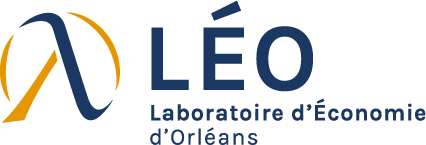
Séminaires de recherche
Pricing the CBOT T-Bonds Futures
Mardi | 2009-05-19
Ramzi BEN-ABDALLAH – Hatem BEN-AMEUR – libre
The aim of this paper is to investigate the pricing of the Chicago Board ofTrade Treasury-Bond futures. The difficulty to price it arises from its multipleinter-dependent embedded delivery options, which can be exercised at varioustimes and dates during the delivery month. We consider a general Markov diffusionprocess model for stochastic interest rates and propose a pricing algorithmthat can handle all the delivery rules embedded in the CBOT T-bond futures.Our procedure combines dynamic programming, finite-elements approximation,and fixed-point evaluation. Numerical illustrations are provided under the onefactorVasicek (1977) and Cox-Ingesoll-Ross (1985) models, and under the timein-homogeneous Hull-White (1990) model.
Effectiveness of Corporate Governance Mechanisms in us Firms Bankrupted Following the Burst of the Financial Speculative Bubble in Mid-2007
Mardi | 2009-05-12
Xavier BREDARD – libre
The aim of this paper is to analyse the effectiveness of corporate governance mechanisms onthe performance and the indebtedness of firms that have been bankrupted.Our sample is made of 81 U.S. firms that have filled for chapters 7 or 11 of the bankruptcyprotection law after the burst of the financial speculative bubble in mid-2007 for which wecollected characteristics for year 2006. In order to obtain a broader view of the researchproblem, we decided to lead a multivariate analysis linking corporate governancemechanisms (approached by variables regarding CEO characteristics and board structure)with two performance indicators and, in an exploratory phase, with liquidity and solvabilityratios. The results of our four regression models including control variables (activity fieldand size) show that firms from the banking sector are more exposed to potential problems onboth performance and indebtedness points of view. Regarding the performance ratios, wenotice that CEO tenure and the duality of the two CEO and chairperson functions reflect apositive entrenchment while the proportion of shares held by the CEO and its ageing arenegatively linked to performance ratios. The exploratory phase relative to indebtednessindicates that liquidity is positively linked to board activity and CEO compensation while anaccrued number of independent directors in the board appears to be an efficient way tomanage solvability. Last, the existence of a compensation committee seems to be aninadequate corporate control mechanism regarding solvability matters.Consequently, our results show that, while indebtedness is mainly driven by the structure ofthe board of directors, performance is determined by CEO characteristics.
A Robust Conditional Realized Extended 4-CAPM
Mardi | 2009-05-05
Patrick KOUONTCHOU – Bertrand MAILLET – Sessi TOKPAVI
In this paper we present and extend the approach of Bollerslev and Zhang (2003)for “realized” measures and co-measures of risk in some classical asset pricingmodels, such as the Capital Asset Pricing Model (CAPM) of Sharpe (1964) andthe Arbitrage Pricing Theory (APT) model by Ross (1976). These extensionsinclude higher-moments asset pricing models (see Jurczenko and Maillet, 2006),conditional asset pricing models (see Bollerslev et al., 1988, and Jondeau andRockinger, 2004). Estimations are conducted using several methodologies aimingto neutralize data measurement and model misspecification errors (see Ledoitand Wolf, 2003 and 2004), properly dealing with inter-relations between financialassets in term of returns (see Zellner, 1962), but also in terms of higher conditionalmoments (see Bollerslev, 1988).
Unexpected Media Coverage and Stock Market Outcomes: Evidence from Chemical Disaster
Mardi | 2009-04-14
B103
Marie-Aude LAGUNA – Audrey LAUDE
Using the event-study methodology and multivariate regressions, this paper examinesthe intensity of media coverage, its determinants and its marginal effect on stock returnsfollowing chemical disasters. To do this, we build an original dataset of chemical explosionsthat occurred worldwide from 1990-2005. First, our results show that news coverage increaseswith the social and environmental consequences of the accident. Second, to deal with the factthat news coverage is determined simultaneously with stock returns, we suggest two validand original instrumental variables: a measure of the firm’s newsworthiness and a measure ofdaily news pressure at the time of the disaster. We find that unexpected news coverage dueto chemical disasters also respond to these conjunctural factors, and is truly exogenous toabnormal returns. Third, we show that, all else being equal (pollution, number of casualties,and firm profile), the stock market reaction to intense press coverage is delayed, and becomesnegative in the long-term. At the same time, there is clear evidence that in the first daysnews coverage mitigates the market value losses. We interpret these results as evidence thatinvestors are slow to recognize the extent of the loss associated with the public implicationsof news coverage (e.g., image and public trust deterioration). In addition, in contrast toprevious studies, we argue that press coverage is not necessarily associated with increasedinvestor attention.
